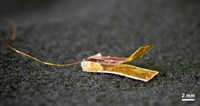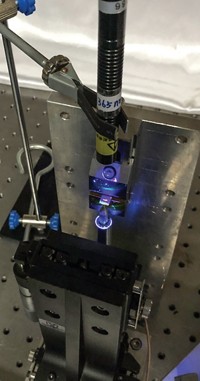Advertisement
Grab your lab coat. Let's get started
Welcome!
Welcome!
Create an account below to get 6 C&EN articles per month, receive newsletters and more - all free.
It seems this is your first time logging in online. Please enter the following information to continue.
As an ACS member you automatically get access to this site. All we need is few more details to create your reading experience.
Not you? Sign in with a different account.
Not you? Sign in with a different account.
ERROR 1
ERROR 1
ERROR 2
ERROR 2
ERROR 2
ERROR 2
ERROR 2
Password and Confirm password must match.
If you have an ACS member number, please enter it here so we can link this account to your membership. (optional)
ERROR 2
ACS values your privacy. By submitting your information, you are gaining access to C&EN and subscribing to our weekly newsletter. We use the information you provide to make your reading experience better, and we will never sell your data to third party members.
Materials
Body-Motion-Powered Device Could Promote Bone Healing
Materials Science: Implantable energy-scavenging device powers a laser to encourage bone cell growth
by Katherine Bourzac
July 30, 2015

Medical implants and wearable devices that harvest energy from the bearer’s movements and convert it into electrical power could help patients avoid the inconvenience of replacing batteries and the risk of follow-up surgeries to replace them. Zhong Lin Wang, a materials scientist at Georgia Tech in Atlanta and the Chinese Academy of Sciences in Beijing, has already shown his group’s energy-scavenging device can power a pacemaker (Adv. Mater. 2010, DOI: 10.1002/adma.200904355). Now he and his Beijing team have shown that they can also power a laser for accelerating bone-healing (ACS Nano 2015, DOI: 10.1021/acsnano.5b03567).
Wang’s power converting devices rely on static electricity. They sandwich two flexible films with oppositely charged surfaces—one of polydimethylsiloxane and the other of indium tin oxide—connected to one another in an electrical circuit. With the bend of an elbow or the rise and fall of the chest, the films are squished, changing the voltage between them and driving a current in the circuit that can power lasers, LEDs, or other devices.
Biologists have shown that low-intensity light from infrared lasers can encourage the growth of early-stage bone cells, a key part of bone healing. Wang wondered if his team could make a simple, self-powered device to carry out this kind of light therapy. In vitro tests showed that an implantable-generator-powered infrared laser accelerated the proliferation of early-stage mouse bone cells by 15 percent after two days compared with untreated cells. They also showed that, when implanted in mice in between the diaphragm and the liver, the generator produced power from the diaphragm’s motion—but they still need to test bone healing in the mouse.
The device converts about 50% of mechanical energy into electrical energy—good enough for proof-of-concept medical devices, says Wang, but practical systems will require higher conversion rates. Next they’ll work on boosting the generator’s power output: When the device was attached to a person’s skin at the elbow to test its output under human motion, the laser fired only once per minute. “We want to continue improving the power output so that we can speed up wound healing,” he says.





Join the conversation
Contact the reporter
Submit a Letter to the Editor for publication
Engage with us on Twitter